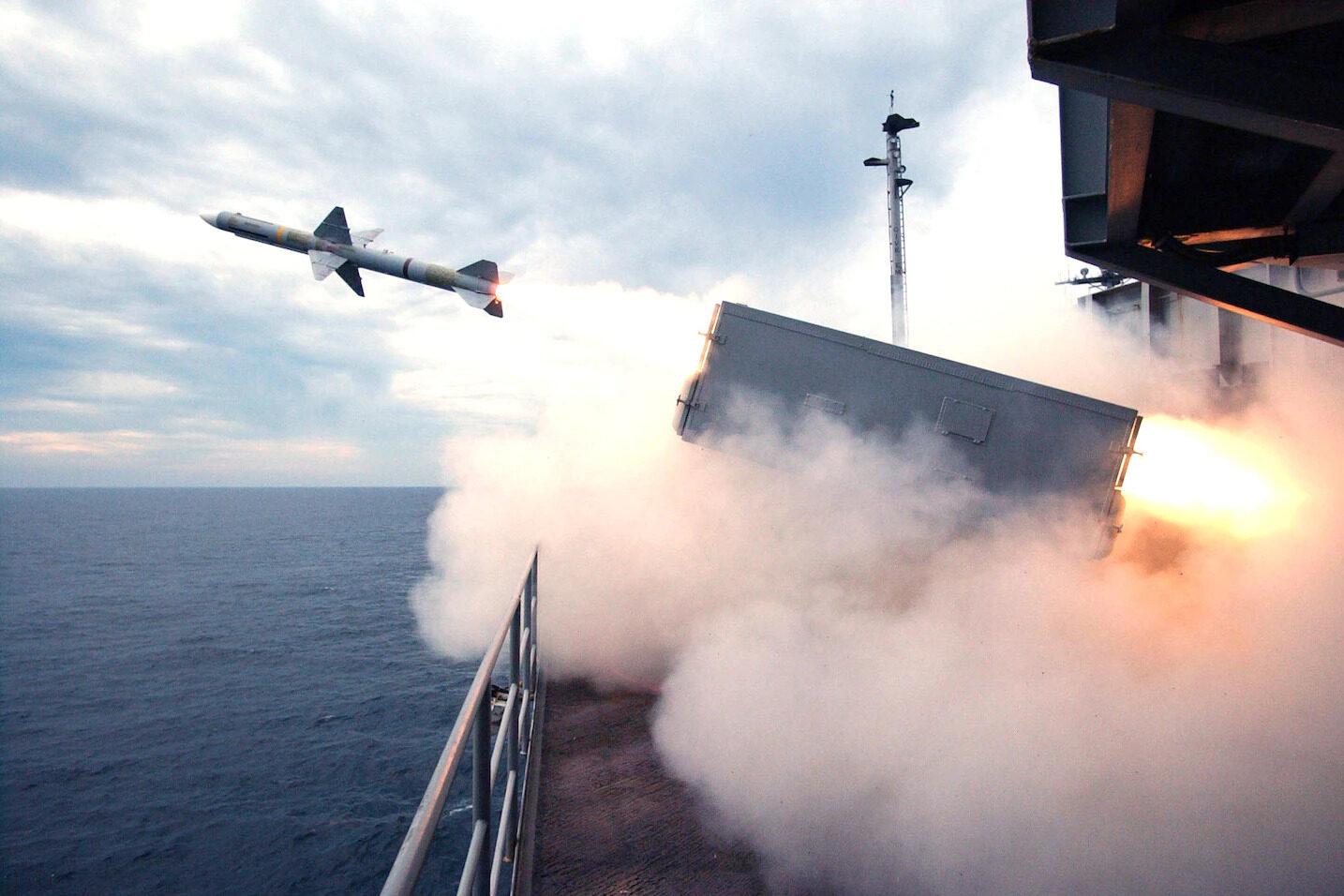
A NATO Sea Sparrow missile is launched during a live-fire self-defense missile exercise aboard the aircraft carrier USS Harry S Truman in 2004. (Photo credit: Petty Officer 2nd class Jason P. Taylor/US Navy, Department of Defense).
The United States will supply Ukraine with RIM-7 Sea Sparrow short-range anti-aircraft missiles, Politico reported on January 5.
The missiles will be provided as a part of a $3.8 billion military aid package that will be announced on January 6. Around $2.25 billion of the package will be devoted for Ukraine, while the rest are meant to allow East European countries to buy U.S. military equipment.
Two sources familiar with the matter told Politico that Ukraine is planning to launch the missiles, which were originally developed in the 1960s to provide “point-defense” for naval vessels, from its existing Soviet-made Buk-M1 air defense systems.
Taiwan has been the only country to operate the ground-launched version of the missiles, as a part of the Skyguard air defense system, while the U.S. and multiple allied navies use the original naval version.
The Sea Sparrow, which is a derivative from the AIM-7 Sparrow air-to-air missile, has an engagement range of around 19 kilometers.
The missile is guided by semi-active radar, the same guidance method used by the 9М38-series missiles of the Buk-M1 system. This likely made the integration process easier.
Ukraine inherited some 70 Buk-M1 systems after the collapse of the Soviet Union. Many of these systems were destroyed or damaged after the start of the Russian special military operation in the country.

An Illustrative image of a Ukrainian Buk-M1 air defense system with its original 9М38-series missiles. Source: the Ukrainian Ministry of Defense.
The U.S. and its allies have large quantities of Sea Sparrow missiles, which will allow Ukraine to keep its Buk-M1 systems operational. The modified systems will likely be used mainly against cruise missiles and drones as the Sea Sparrow was mainly developed to engage aerial targets at lower altitudes.
Ukraine received several Western-made air defense and radar systems in the last few months as a part of efforts led by the U.S. to rebuild its air defense capabilities. Despite this support, Kiev is still incapable of repelling Russia’s repeated missile and drone attacks.
The supply of Sea Sparrow missiles will not give Ukraine a military edge. However, it will prolong the conflict. This appears to be the main goal of the U.S. and its allies.





